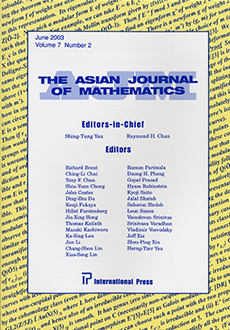Abstract
The Torelli theorem (cf.[Tor13], [Andr58], [Weil-57]) states that two algebraic curves are isomorphic if and only if their Jacobian varieties are isomorphic as polarized abelian varieties.
André Weil ([Weil-CPII]) set up a program for doing arithmetics on K3 surfaces, based on a Torelli type theorem, which was later proven through the effort of several authors (for this long story and related references we refer to Chapter VIII of the book [BPV]). This result is crucial for answering questions about the existence of K3 surfaces or families thereof possessing certain curve configurations.
The general Torelli question, as set up by Griffiths ([Grif68], [Grif70], cf. also [Grif-Schmid], [Grif84]), is to associate to each projective variety X of general type its Hodge structure of weight n = dim(X), and ask whether the corresponding "period map" ψ n is injective on the local moduli space (or Kuranishi space of X).
It was known since long time that, as soon as the dimension is at least two, there are families of varieties without Hodge structures, which are not rigid. Surfaces of general type with q = pg = 0 were constructed in the 30's by Campedelli and Godeaux ([Cam32], [God35]), and for instance, in the case of the Godeaux surfaces, the Kuranishi family has dimension 8.
A natural question which arises is: under which hypothesis on X is a local Torelli theorem valid for the Hodge structure of weight n = dim X?
In other words, when is the local period map ψ n a local embedding?
Citation
I. C. Bauer . F. Catanese . "Symmetry and Variation of Hodge Structures." Asian J. Math. 8 (2) 363 - 390, April, 2004.
Information





